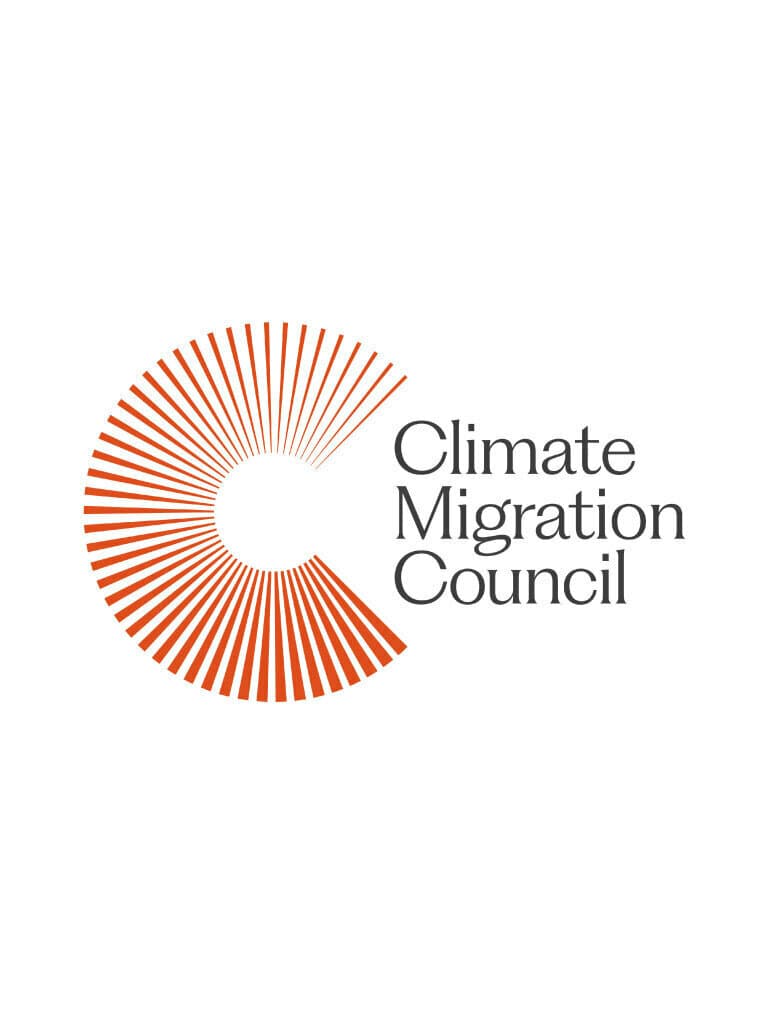
Learn About the Climate Migration Council
By Marshall Fitz and Hal Harvey
Picture yourself looking over scorched crops that have failed for the second year in a row as temperatures rise and famine takes hold. Or picture yourself searching for water-soaked family photographs where your home once stood before it was taken by storm surges. Imagine crossing international borders with everything you own on your back, seeking a better future—or any future—for you and your family. Imagine rebuilding a life in a country you’ve never called home.
That forced displacement has been the new reality for many since Putin declared war on Ukraine. Neighboring countries have been gripped by the devastation and atrocities of war—and by the record number of migrants seeking refuge out of both Ukraine and Russia. At the time of this article, 2.8 million migrants have fled Ukraine, and tens of thousands more have fled Russia in what’s being called “Europe’s fastest migration in decades.”
The past weeks have shown a scope and speed of forced displacement that garnered international outcry and a flood of humanitarian response. This type of migration crisis is horrifying but familiar: war and randomized attacks driving millions of people to flee is the classic refugee archetype of the past. Within the same two weeks, however, a new harsh paradigm of large-scale forced displacement was profiled in a stunning Intergovernmental Panel on Climate Change (IPCC) report: the rapidly escalating impacts of climate change on vulnerable populations.
Over the past decade, an average of 22.1 million people have been displaced by extreme weather events each year. That number accounts only for those who can trace their displacement to a particular disaster; many millions more are driven away by a confluence of factors that increasingly includes climate. That’s nearly eight times today’s Ukrainian exodus, year in and year out.
Climate change’s ravages can no longer be disconnected from their impact on forced migration.
The much-anticipated IPCC report was more hair-raising than expected on a variety of fronts, including its most pointed recognition of the potentially massive scale of climate-driven migration to date. But while there is international consensus about what must be done to mitigate climate change, and a global advocacy movement pressing for rapid carbon reduction, there is no companion consensus—or advocacy movement—on how to responsibly and humanely manage the masses of people that will be displaced by the changing climate.
The call to action that emerges from this IPCC report is clear: climate change’s ravages can no longer be disconnected from their impact on forced migration. It is past time for an interconnected response to these deeply interconnected challenges.
The most comprehensive current climate migration projections (which the IPCC cited in its assessment of climate migration) are from a World Bank report that layers econometric data on top of emissions projections; it offers a glimpse of what a global reshuffling might look like in the decades to come. This report suggests that slow-onset climate impacts may drive 216 million people from their homes by 2050. It is hard to imagine human displacement of this magnitude. These climate-driven impacts are on top of the human costs from political conflicts like Russia’s war against Ukraine. The failure to proactively prepare for these predictable, staggering human repercussions will upend the geopolitical order and haunt our collective conscience.
To provide a clearer picture of the domino effect triggered by severe climate impacts, consider this accelerating trend: climate change drives people towards cities, where rapid, unmanaged population growth strains resources, increases harmful carbon emissions, results in sprawling slums, and creates conditions ripe for conflict. Right now, a little over half of the world lives in cities, but the World Bank estimates that 68 percent of the global population will be urban by 2050. Of equal concern, the International Committee of the Red Cross predicts that 96 percent of that future urban growth will happen in cities that already have a heightened risk of conflict and weak governance structures. And when cities are stretched to their breaking point, internally displaced people try to cross international borders.
In country after country, that often chaotic irregular migration stimulates a reactionary political force—be it right-wing backlash in Europe following the Syrian refugee crisis or Trump’s rise to power on a nakedly anti-immigrant platform. That xenophobia further weakens the prospects for people driven from their homes.
To minimize the cascading impacts of climate-driven migration and migration-driven political reactions, nations must at once reduce carbon emissions and develop strong, humane systems for managing increased migration. Increasingly despoiled lands and increasingly extreme weather conditions require deep international investments in climate resilience, economic stabilization, and integration.
But vast and tragic human flows are already with us and will grow sharply in coming years. This forced displacement must be slowed with smart climate policy, but it is too late to stop it altogether. Those forced to migrate must be empowered to move through safe, orderly migration channels; and they must be met with care, compassion, and competence.